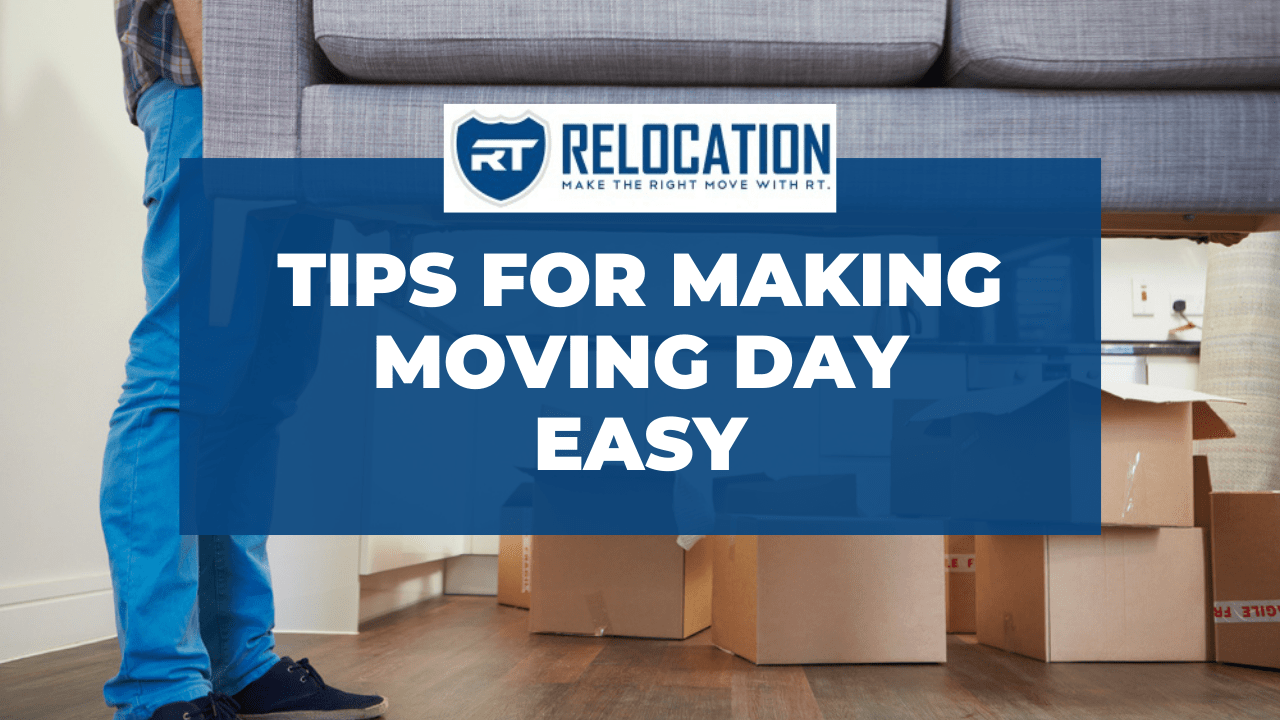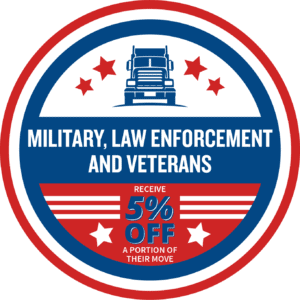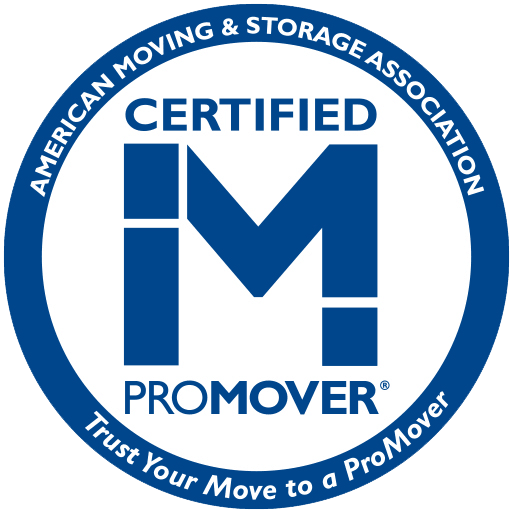
Moving is a chore and although it may seem very stressful for you, professional movers are experienced and proficient at what they do! They are trained to use the most effective and efficient techniques to ensure that all of your items are packed properly, shipped safely and delivered promptly to your new location. Here are 5 things they want you to know when planning your move.
Packing your items
Packing for a relocation may be the most time-consuming aspect of the entire process. Your ‘before the day’ checklist should include all the items you need to pack and store, including a list of supplies like bubble wrap, trash bags, packing materials, and of course moving boxes.
Our top packing ideas for moving are all about cutting corners so that you may save time while still protecting your possessions. With that in mind, here are the moving packing techniques you need to know for a less stressful move.
Don’t empty the drawers of your dresser. Remove the drawers from the dresser, leaving the things inside, and covering the drawer with plastic wrap to secure it. If the dresser isn’t too heavy, you may leave the drawers in place and simply cover the furniture with plastic wrap.
Leave your clothing hanging on the rack. Keep clothing on hangers and either group them in large rubbish bags or put them in a wardrobe box.
Make use of your linens, towels, and other soft objects. Wrap breakables like as glassware or perfume bottles in socks for extra padding, and use linens and towels to cushion fragile, difficult-to-wrap objects such as lamps and vases. In the kitchen, wrap knives and other sharp objects in dishcloths and fasten them with a rubber band.
Pots can be used to store tiny objects. Instead of wasting extra boxes for little culinary goods like spices and gadgets, fill them up with them in large pots and other sealable containers. You’ll save a lot of room.
Wrap everything that could spill with a tiny piece of plastic wrap. Prevent spills in transportation by securing the lids of products such as soap, shampoo, cleaning supplies, and other items you don’t want to be splashed all over your belongings using plastic wrap.
Prepare your suitcases. You may put a lot of heavy items in luggage since their wheels make them easier to transport. Pack items that are difficult to move in boxes, such as books and heavy serving dishes, in suitcases.
Color-code the boxes. Pick up a sheet of different colored stickers and allocate each color to a room to save time when labeling your boxes. You’ll be able to easily determine what needs to be put where, and you won’t have to seek for the marker every time you close a box.
Take photographs of the contents of the package. After you’ve packed the boxes, take a snap photo of the insides in case you need to jog your mind about what’s inside later. While you won’t be able to catch every item in the image, it should give you a good indication of what’s within each box.
Take a photo of the back of your television. It might be tough to keep track of all the cables. Take a photo of the back of your TV while it is still plugged in so you can remember how to reassemble it later.
Create a moving necessities bag. Pack a compact duffel bag or suitcase with goods you’ll need access to throughout your move and immediately after arriving at your new home, such as vital papers, prescriptions, chargers, basic toiletries, a couple of changes of clothes, and so on.
Communicating with your moving company
It is important that your boxes are packed efficiently and labeled accordingly. With local moves, our trucks, at RT Relocation, are cleaned out every single night which ensures that every item has been delivered.
Albeit, long distance moves are loaded and moved along with other shipments, so it is crucial that everything is packed and labeled accordingly. Everything that is to be moved will be stickered and inventoried by our licensed and professional movers and loaded into a trailer with other shipments traveling a similar route. We divide the different shipments by using cardboard between each shipment. In either case, you can see why it is important to label each box with its designated room. In addition, fragile boxes should be clearly labeled and heavy items should not be packed in large boxes. Packing with purpose is an essential step in the moving process.
Finish your packing prior to moving day
Whether you opt for a full-service move or plan to pack yourself, it is important that you have your packing completed prior to moving day. This will ensure that everyone stays on schedule and will reduce any unnecessary stress on the day of the move.
Be present, but not too present on moving day
It’s important that you don’t disappear on moving day. They may need information from you, such as where to park or how to best access your home. As much as you need to be present, you also need to give your movers ample space to do their job. They know what they’re doing and if they need your assistance, they will let you know. Be available, but from a short distance.
Be prepared in multiple ways on moving day
Pack a cooler with essentials
Fill a cooler with convenient goods that will help you stay energized throughout the day. Water is really important as well as some small snacks, protein bars, etc. Move it in your car rather than the moving truck so you can reach it anytime you need to.
Transport kids and pets with you
Make a plan for small children and pets. If your children are too little to assist with the move, your best choice is to have them hang out with friends or relatives to relieve some of your tension while also keeping them safe. The same is true with pets. If you can, make other arrangements for your children and pets—you’ll all be happy.
Pack the day before moving day. Last-minute packing might cause your entire day to drag. Make it a goal to be entirely packed before your movers come or the rental vehicle arrives. That way, you can concentrate on completing the work at hand right away.
Keep valuables with you at all times
It’s important to keep cash, important documents, jewelry, and your kid’s favorite stuffed animal with you at all times. This will ensure these important items don’t get lost in the move and no one gets blamed for misplacing them.
Unpacking after the move
With a System, Unpack
Know what you’re unpacking before diving in and randomly opening boxes. Make a copy of the inventory list—either the one provided by the moving company or one you prepared to track your belongings before moving. Packing should ideally involve boxing up objects according to usage or by room, so inspect box labels or open them up and glance inside before you begin emptying them.
Begin with the Essentials
Unpack the essentials package next (or boxes). This should be one of the first boxes unloaded from the truck or one of the boxes you brought with you in the car. These are the key goods you will require to keep your home operational in the near term. If you didn’t set aside a box or two for the necessities, swiftly look for boxes containing whatever you’ll need for at least a couple of nights. These necessities would typically include basic toiletries, medications, books, and documents with important addresses and phone numbers, as well as some basic meal preparation materials.
First and foremost, complete the kitchen.
Now, unpack and store the kitchen items. If you’ve labeled the boxes correctly, you should be able to find what you’re looking for rather easily. If you have the time, line the kitchen cupboards and cabinets first. If you don’t have time to finish the kitchen, only unpack what you need, including pots and pans. Connect the primary appliances and plug in any little items that will make your life easier, such as the coffee maker and toaster. After the rest of the house has been unloaded, you can return to completely organizing the kitchen.
Bedrooms come later
Following the kitchen, assemble the mattresses and unpack the sheets for each bedroom. Ideally, you should have brought a single set of linens for each bed; if so, getting your beds ready for the first night should be pretty simple. If at all possible, plan out furniture placement and closet organization before unpacking packed items. Installing shelving and closet organizing items first will make unpacking more efficient and save you time in the long run.
Wait before you consider something lost
Moving can be chaotic. It takes time to settle in and unpack. With that said, we strongly suggest unpacking everything before inquiring about any missing items.
Planning to move? Contact RT Relocation, request a quote today and let us help you plan your next move!









